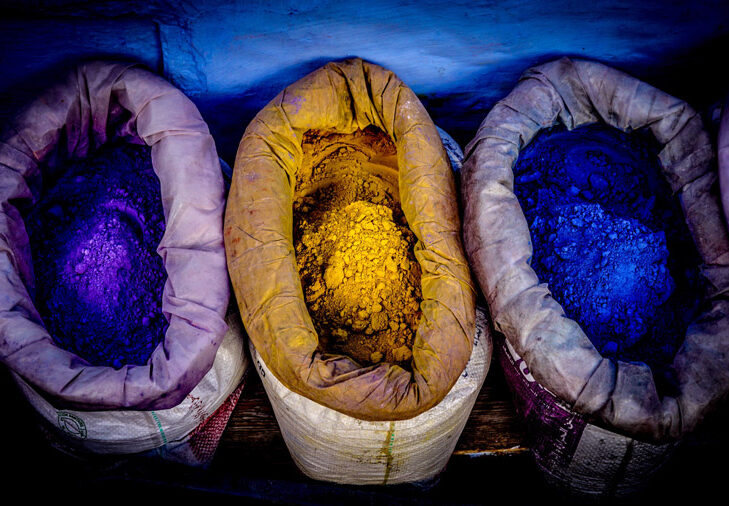
China revises law on new chemical substances
China has revised its legislation on the registration of new chemical substances. The newly updated Measures for the Environmental Management Registration of New Chemical Substances (MEE Order 12) were published by the Ministry of Ecology and Environment on 7 May 2020 and will replace existing legislation, MEP Order 7, on 1 January 2021.
 Heng Li, a senior associate at global law firm Mayer Brown, provided an assessment of the new legislation during a Chemical Watch presentation in June 2020. Li is involved in Mayer Brown’s Global Chemical Management Program and is responsible for monitoring developments on chemicals control internationally. Founded in 2007, Chemical Watch is a global provider of independent intelligence on managing chemicals for product safety professionals.
Heng Li, a senior associate at global law firm Mayer Brown, provided an assessment of the new legislation during a Chemical Watch presentation in June 2020. Li is involved in Mayer Brown’s Global Chemical Management Program and is responsible for monitoring developments on chemicals control internationally. Founded in 2007, Chemical Watch is a global provider of independent intelligence on managing chemicals for product safety professionals.
Updated regulations present practical considerations for companies who supply to, and manufacture in China. “Compliance no longer means just getting the registration done,” says Li. Enhanced post-registration requirements will affect companies throughout the supply chain, within or outside of China, directly and indirectly. Some companies will face increasing regulatory burden, she says, particularly those dealing with highly hazardous substances (HHS), persistent bioaccumulative (PB) and bioaccumulative toxic (BT) compounds.
The Mayer Brown representative emphasised the importance of strong internal compliance procedures. “Now is the right time to audit and update internal compliance systems,” says Li. It is also necessary to ensure appropriate contracts are in place with suppliers, including the consideration of compensation for possible losses through partner non-compliance.
Administration fines for MEE Order 12 remain consistent with the previous classification at CNY30,000 (~USD 4,231). However, additional penalties can be triggered through non-conformity including punishment under China’s social credit systems and the non-acceptance of future registration applications within one or three years. The additional penalties are serious, says Li, with far-reaching implications for businesses.
 The scope of the law has undergone a significant change with the introduction of “new use management.” New use management applies to HHS, PB, persistent toxic (PT) and BT chemicals registered under the standard registration. Even if a substance is already present in China’s chemical inventory of existing chemical substances (IECSC) it will be considered a new substance if the substance is used for other purposes. This is a new concept in China’s new chemical regulation process, though it is similar to the European Union’s REACH chemical regulation, which is use-specific and partially company-specific, says Li.
The scope of the law has undergone a significant change with the introduction of “new use management.” New use management applies to HHS, PB, persistent toxic (PT) and BT chemicals registered under the standard registration. Even if a substance is already present in China’s chemical inventory of existing chemical substances (IECSC) it will be considered a new substance if the substance is used for other purposes. This is a new concept in China’s new chemical regulation process, though it is similar to the European Union’s REACH chemical regulation, which is use-specific and partially company-specific, says Li.
Exemptions in MEE Order 12 are “generally similar” to MEP Order 7, says Li. Three types are expressly exempt including fertiliser, re-exported and radioactive substances. The Ministry of Ecology and Environment is reportedly developing further guidance documentation. Whether additional exemptions will be included when detailed guidance is released is as yet unknown.
MEE Order 12 includes several changes to the regulatory framework. The three registration types (standard, simplified and filing notification) remain the same, however, manufacturing or import tonnage thresholds under each registration have been lifted in the revised regulation. Standard registration applies to volumes equal to or greater than 10 tonnes per year (t/y); simplified registration includes volumes of 1-10 t/y, and levels below 1 t/y involve filing notification only. Polymer concentrations below 2% or polymers of low concern require only filing notification, irrespective of volume.
Data requirements now include a “socio-economic benefit analysis” for HHS and a “letter of commitment” for the standard registration on the “implementation or communication of environmental risk control measures and environmental management requirements.” Also, there is an obligation to submit any other information on the environmental and health hazards and environmental risks a registrant “holds”. This issue has broad global implications, says Li. Information acquired in other jurisdictions may need to be submitted to China. Ambiguity around the term “holds” is also of primary concern. Companies will be seeking clarification when MEE detailed guidelines become available.
 While Li contends that the registration process remains “generally the same,” decision making on standard and simplified registration is now mainly risk-based, she says. There have been some improvements made to post-registration obligations in MEE Order 12. Annual reporting is only required for substances designated by MEE. This will reduce the regulatory burden on some companies. Still, various new requirements have been introduced, many of which apply more broadly than to just the registration certificate holder. Manufacturers, importers, processors, users and even researchers may be impacted by these commitments and may be obliged to release additional information or inform of any known environmental or health hazards.
While Li contends that the registration process remains “generally the same,” decision making on standard and simplified registration is now mainly risk-based, she says. There have been some improvements made to post-registration obligations in MEE Order 12. Annual reporting is only required for substances designated by MEE. This will reduce the regulatory burden on some companies. Still, various new requirements have been introduced, many of which apply more broadly than to just the registration certificate holder. Manufacturers, importers, processors, users and even researchers may be impacted by these commitments and may be obliged to release additional information or inform of any known environmental or health hazards.
Public consultation on MEE Circular Concerning Transitional Arrangements for the Environmental Management Registration of New Chemical Substances arrangements was completed between 3-20 June. These draft transitional arrangements were created to clarify how MEE Order 12 applies to two specific types of substances, those that have already been registered under MEE Order 7, and registrations that have been accepted before the new law change but not completed due to procedural reasons. The requirement to resubmit a registration under MEE Order 12 due to procedural delays or to simply change the content of a previously approved certification has been highly controversial, says Li.
New substances registered under MEE Order 12 will be included in IECSC five years after the date of first registrations.







